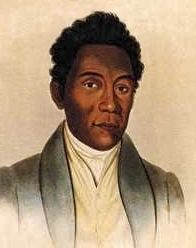Nationality Hawaiian Spouse Bathsheba Pahia | Name David Malo Occupation Historian, Minister | |
 | ||
Children Emma Aʻalailoa Malo Kapena Died October 25, 1853, Maui, Hawaii, United States | ||
Education Lahainaluna High School | ||
Lahainaluna david malo day 2015
David Malo or Davida Malo (1793–1853) was a leading Native Hawaiian historian of the Kingdom of Hawaii. He became a Christian minister and founded a church.
Contents
David Malo Day | Lahaina | Vlog
Life
David Malo was born in Keauhou on the Island of Hawaiʻi around 1793. He spelled his name Davida, since syllables always end in vowels in the Hawaiian language.
His father was named Aoʻao and mother was named Heone. He grew up during the period when Kamehameha I united the islands into a single kingdom. Malo was associated with the chief Kuakini, who was a brother of Queen Kaʻahumanu, during this time of great change, probably serving as oral historian and court genealogist. Early in life, he married Aʻalailoa (1790?–1822), a widow much older than, but they had no children when she died.
In 1823 Malo moved to Lahaina on the Hawaiian island of Maui and became a student of Reverend William Richards, learning how to read and write in both English and Hawaiian. Malo converted to Christianity and was given the baptismal name of David. He married again to a woman named Pahia (1796–1845), who took the Christian name Bathsheba; she also died without children. He was a member of the first class at the Lahainaluna School when it was founded by Lorrin Andrews, later serving as school master. He married a third time to Lepeka (1810–1853), who took the Christian name Rebecca, and had one daughter he named Aʻalailoa after his first wife, given the Christian name Emma (1846–1886); she later married John M. Kapena with whom she had a daughter Leihulu Kapena (1868–1930), the wife of Henry Carter. He was ordained into the Christian ministry and settled down in the seaside village of Kalepolepo on South/West Maui where he remained until his death on October 25, 1853.
Work
When Queen Kaʻahumanu died in June 1832, Malo composed a poem in her honor titled He Kanikau o Ka'ahumanu. He helped translate books from the Bible so they could be published in the Hawaiian language. From about 1835 he started writing notes on the Hawaiian religion and cultural history, along with members of the school and instructor Sheldon Dibble. The book was first published in Hawaiian around 1838 (a facsimile of this original has been recently reprinted). He helped form the first Hawaiian Historical Society with Samuel Kamakau in 1841. After that group disbanded, another society of the same name was founded in 1892. Also in 1841 he was elected as representative from Maui to the first House of Representatives of the Kingdom. In 1858 more stories were added to his book and a second Hawaiian edition was published. The book was translated by Nathaniel Bright Emerson and published in English in 1898, and again in 1951 and 1987 editions. Here is a link to the full text of "Moolelo Hawaii." Translated and introduction by Emerson (https://archive.org/stream/hawaiianantiquit00malorich/hawaiianantiquit00malorich_djvu.txt). He wrote a history of Kamehameha I, but the manuscript was lost. In 1852 he supervised building Kilolani Church on Maui. Its ruins are now on the grounds of the Trinity by-the-Sea Episcopal Church near modern-day Kihei, located at 20°45′42.32″N 156°27′10.65″W. His grave is located above the Lahainaluna school on Maui.
The Lahainaluna School has named the Boys' Dormitory after him, and has an annual celebration of his contribution in mid-April.
